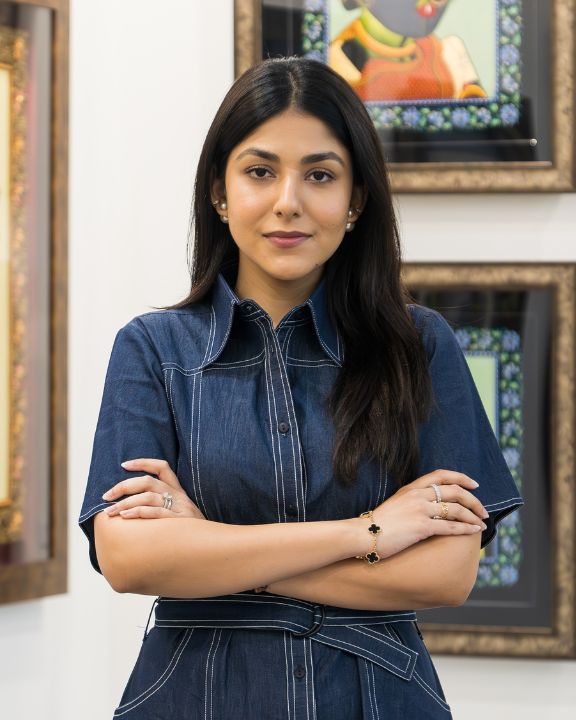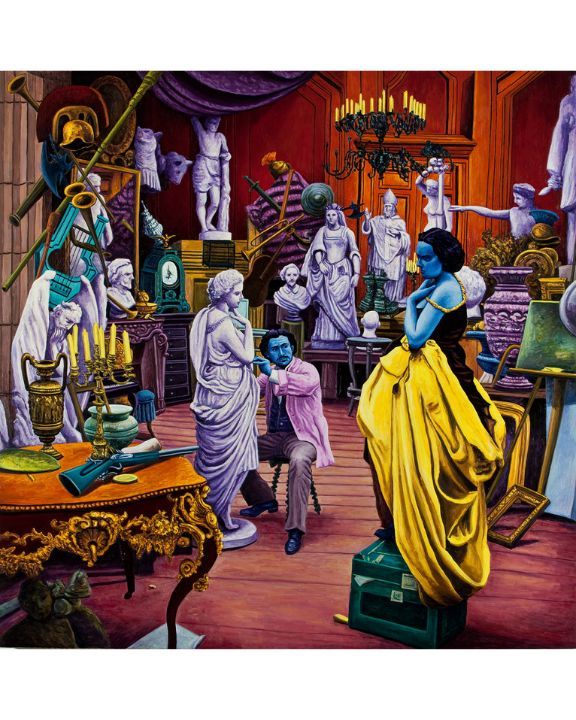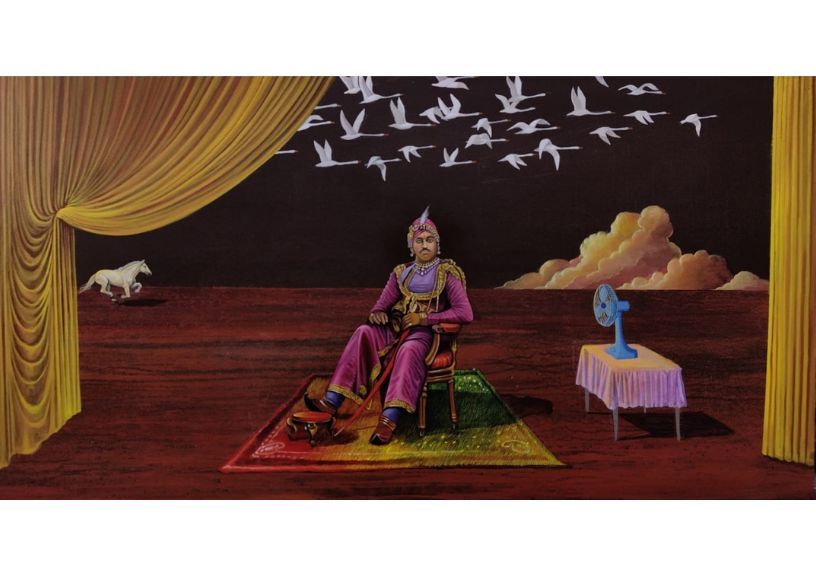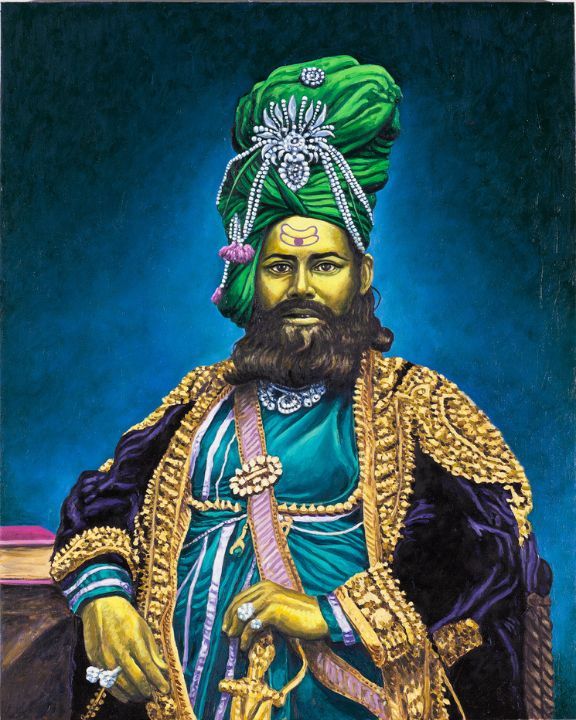Two distinct geographies, two poles apart cultures, two completely different approaches—but one shared dialogue. Sanya Malik’s newly opened Black Cube Gallery brings together two artists who couldn’t be more different to explore themes of continuity, identity, memory and reinterpretation. Kindred Dichotomies features works by Sudhanshu Sutar from Odisha and Andrea Zucchi from Milan—artists rooted in very different cultural and historical contexts, yet connected through their art. We at Architecture+Design caught up with Sanya to discuss the concept behind the exhibition, how the contrasting styles of these artists shape her vision, and a lot more.

What inspired you to conceptualise Kindred Dichotomies?
The idea for Kindred Dichotomies took shape after I encountered Andrea Zucchi’s work in the summer of 2024. His visual language immediately reminded me of Sudhanshu Sutar’s practice—whom we already work with at Black Cube. Although curating a two-person show across geographies and artistic temperaments isn’t easy, the conceptual and aesthetic resonance between their works was undeniable. I knew I wanted to not only bring Zucchi’s work to India but to present it in conversation with Sutar’s—sparking a cross-cultural dialogue through their shared engagement with history and reinterpretation.
How did the idea of bringing together Sudhanshu Sutar and Andrea Zucchi—artists from such different cultural backgrounds—come about?
Despite their vastly different cultural roots—Sutar from Odisha and Zucchi from Milan—both artists engage deeply with themes of memory, identity and the fluidity of history. Their mediums, references and visual strategies may differ, but at their core, both treat history as something alive: something to be re-examined, reimagined and reinterpreted. That shared ethos made the pairing not only possible but urgent. Their works begin a visual conversation that transcends spoken language, which is especially powerful in today’s globalised world.

The exhibition explores history, identity and memory. How do you see these themes manifesting through their works?
Sutar’s work is rooted in the cultural memory of Odisha, drawing inspiration from places like Kanika Palace—a once-grand structure now faded with time. His paintings reanimate forgotten histories, particularly those of lost royalty and shifting identities. With a strong theatrical sensibility, each work feels like a set piece in a larger drama about dignity, power and impermanence.
Zucchi, on the other hand, appropriates and transforms 19th-century photographs using psychedelic colours and surreal compositions. He calls this process “psychedelic plagiarism”—an irreverent yet incisive way to question how history is recorded and reproduced. His work interrogates authenticity and the ways in which visual culture mediates our understanding of the past. Together, they approach history from opposite directions—Sutar reconstructs with reverence, Zucchi deconstructs with wit—but both insist on its ongoing relevance.
Sudhanshu Sutar’s work reflects lost royalty and theatrical storytelling, while Andrea Zucchi’s approach is more irreverent and surreal. How do these contrasting styles complement each other in the exhibition?
Their contrasting approaches generate a powerful tension in the exhibition. Sutar’s work is slow, contemplative—meticulously composed to honour forgotten figures and explore personal and collective memory. Zucchi, by contrast, is bold and almost anarchic in his treatment of historical imagery. His use of saturated colour and digital manipulation gives classical subjects an unexpected, contemporary twist.
This contrast invites viewers to experience history through multiple lenses: one poetic and meditative, the other sharp and subversive. In their differences, they amplify each other’s voices.

How do you think the artists’ use of archival imagery and cultural symbols create a dialogue between past and present? How does the exhibition challenge traditional notions of history and identity?
Both artists use archival materials not to preserve the past, but to provoke new questions about it. Sutar strips faces of individuality to turn his characters into archetypes—symbolic of larger ideas like power, displacement and legacy. His surrealist-inflected compositions merge personal memory with historical inquiry, drawing from his life in Odisha and later Delhi.
Zucchi’s use of historical images feels more confrontational. By digitally distorting and re-colouring classical portraits, he critiques the notion of originality and the mechanisms of historical storytelling. His work taps into today’s digital culture, where reproduction is endless and meaning constantly shifts.
Together, they challenge linear, singular narratives of history—showing instead that identity is layered, unstable, and always in flux.
What do you hope visitors will take away from Kindred Dichotomies?
I hope visitors leave with an expanded sense of how art can make history feel immediate and personal. Kindred Dichotomiesis not just about looking back—it’s about how we carry the past forward, reinterpret it, and use it to make sense of our present. By placing these two artists in dialogue, the exhibition encourages viewers to reflect on cultural difference and similarity, on memory and reinvention. Above all, I hope it reminds people of art’s power to connect us beyond borders, language, and time.

How does the physical space of Black Cube Gallery enhance the experience of this exhibition?
Black Cube’s flexible, minimal architecture allowed us to create a rhythm between the two practices. The clean lines and open volume let each work breathe, while also encouraging a sense of flow between them. We paid close attention to sight-lines and transitions—so that viewers move from Sutar’s quiet intensity to Zucchi’s vibrant disruptions with a sense of unfolding narrative. The space acts almost like a stage, where these parallel yet intersecting stories of history and identity are performed.

The exhibition is described as a dialogue beyond words. How do you see this playing out through the artworks and their interplay?
Neither artist shares a common spoken language, yet their works speak fluently to each other. This “dialogue beyond words” plays out in the way visual motifs echo across canvases or how both engage with time, memory and cultural symbols in unique but resonant ways. The viewer becomes part of that conversation—navigating between solemnity and satire, preservation and disruption. It’s in this silent interplay that the exhibition finds its emotional and conceptual strength.
FROM: 10 April to 27th April 2025
LOCATION: Black Cube Gallery, G12A, 2nd Floor, Hauz Khas, New Delhi
Also Read: In Anna and Daniel’s world, playful perspectives and humour reshape the boundaries of art
